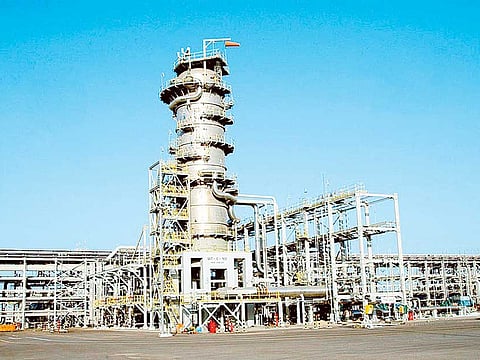Guessing game on about Saudi oil reserves
Rystad’s estimate of nation’s proven reserves at 70b barrels restarts data debate

Beirut: Rystad Energy, a small Norwegian oil and gas data firm released a contentious study several days ago, which concluded the US held more recoverable oil reserves than both Saudi Arabia and Russia. Although Rystad underlined that “more than 50 per cent of remaining [American] oil reserves is unconventional shale oil,” with an estimated 60 billion barrels in Texas alone, serious environmental and health risks were associated with their extraction.
Still, the report raised highly controversial points about Saudi holdings, and opined that Riyadh will not be able to extract and export its black gold for very long.
The question was not new, and while many wondered whether Saudi Arabia would soon run out, this was mostly fiction.
Of course, state secrecy meant that few outsiders knew with any degree of accuracy what the country’s actual reserves were, and what were the correct total production levels to date.
According to the Organisation of the Petroleum Exporting Countries (Opec) Annual Statistical Bulletin for 2015, proven reserves stood at 266 billion barrels that, at current production rates (10.2 million barrels per day in 2015) will last another 70 years.
Rystad, and before it Matthew R. Simmons, a prominent figure in the field of peak oil studies who wrote Twilight in the Desert: The Coming Saudi Oil Shock and the World Economy in 2005 that asserted the unreliability of Middle Eastern oil reserves, these estimates were highly doubtful.
In its latest report, Rystad estimated Saudi proven reserves at a mere 70 billion barrels, while it claimed that probable reserves were about 120 billion barrels.
Even if new field discoveries are added to these figures, the consulting group avowed, reserves would potentially grow to somewhere between 168 billion and 212 billion barrels, still substantially lower than the official data.
Clearly, the insinuation here is that Saudi Arabia is doctoring numbers to maintain proven reserves more or less at the same levels since the mid-1980s, when the 260 billion barrels figure first appeared.
Of course, the controversy did not start with Rystad but was raised by US officials working in Saudi Arabia several years ago, as WikiLeaks cables revealed in 2011.
In 2007, when these cables were written, the focus was crude oil prices, which would surely escalate and fast if Saudi Arabia’s reserves were proven to be lower than many believed.
Several of the cables called on Washington to heed senior Saudi government oil executive warnings, one of whom apparently declared that Saudi Arabia’s crude oil reserves may have been overstated by as much as 300 billion barrels, nearly 40 per cent less than acknowledged.
In fact, one of the US Consular reports from Dammam reported that Abdallah Al Saif, an Aramco senior vice-president for exploration, claimed that Saudi Aramco had 716 billion barrels of total reserves, “of which 51 per cent are recoverable, and that in 20 years Aramco will have 900 billion barrels of reserves,” which raised eyebrows.
At the time, an Aramco geologist disagreed with the senior executive and told the American diplomat of his worries that, if true, meant the actual figures floated between the 300 and 416 billion barrels figure — much higher than what Simmons, Rystad and others affirmed.
What remained unclear, then as now was the actual recoverable levels of oil, and though Riyadh exported — as well as consumed — over 94 billion barrels between 1945 and 2015, it was logical to assume that the day would eventually come when production will have to reach a peak.
For now, however, the data disputes are limited to professional oil analysts, although anti-Saudi elements may have to recalibrate their contempt, especially if Aramco, one of the world’s largest companies, enters into a successful marketing scheme to sell 5 per cent of its downstream assets as proposed by Deputy Crown Prince Mohammad Bin Salman.
Sign up for the Daily Briefing
Get the latest news and updates straight to your inbox


